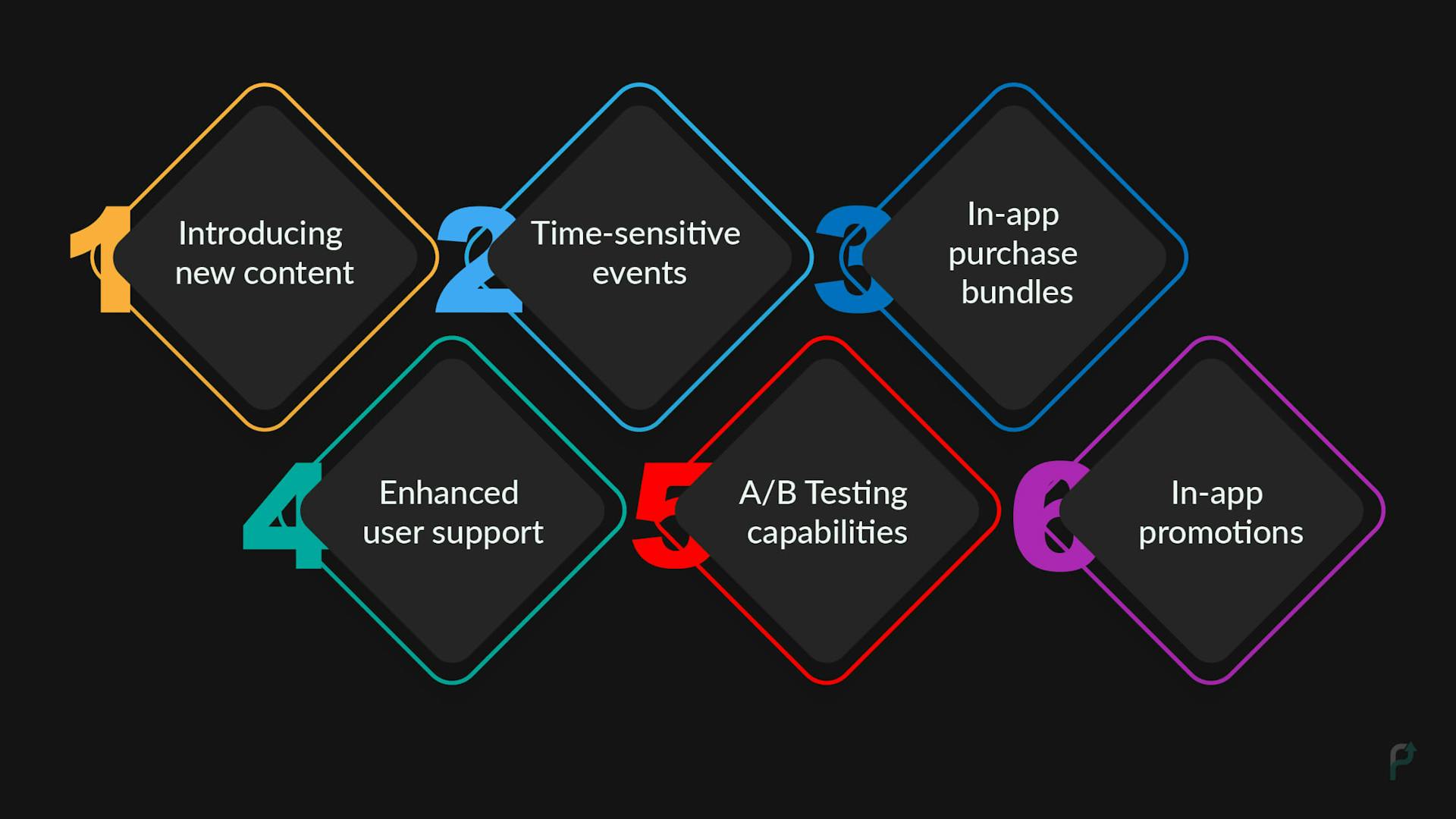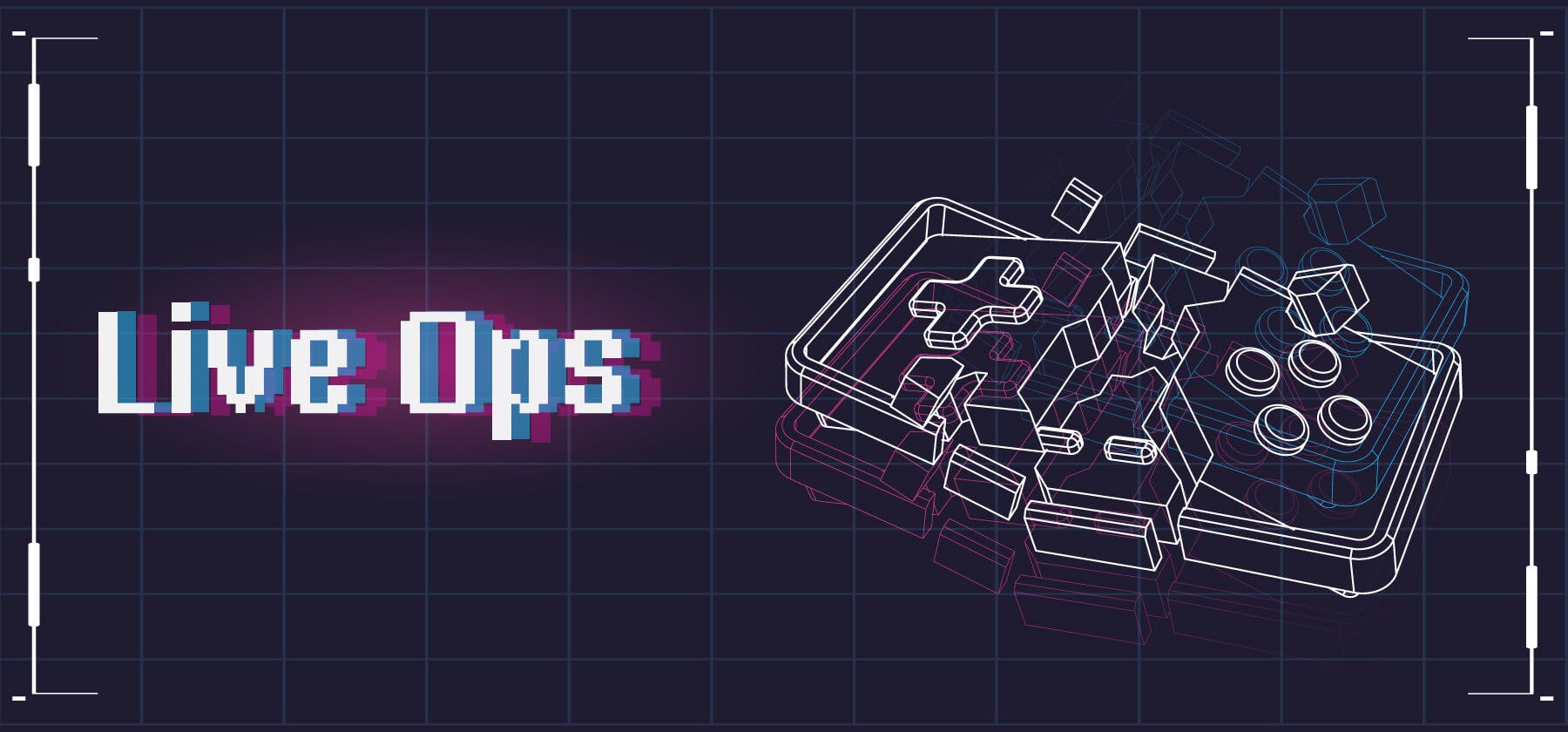- This article has outlined the fundamentals of LiveOps, including its definition, its importance, and how it benefits game developers.
- The article also closely examines how to get started with LiveOps and discusses the top LiveOps tools game developers can use.
In the dynamic realm of the gaming industry, numerous advancements have reshaped the way games are experienced. Among these developments, LiveOps is a pivotal aspect that has transformed the process of game monetization. LiveOps helps to integrate development, operations, and player engagement in real-time seamlessly.
In this article, we will delve into the fundamentals of LiveOps, examine why it is relevant for the gaming industry, and outline some of the best LiveOps practices to optimize results.
Defining LiveOps
LiveOps or Live Operations are the updates or changes introduced to a game when the game is live. LiveOps can address any glitches or bugs within a game by introducing changes as the game progresses and eliminating the need to release a new upgraded version.
LiveOps focuses on continually adding upgrades to the game and, thus, helps retain users and increase engagement rates.
History of LiveOps
Earlier, when gaming consoles were popular, introducing a feature like LiveOps was not possible. Bugs or glitches could not be fixed as the game progresses. Gamers were also likely to abandon the game and not continue to play it because of the bugs.
But when games evolved from discs and cartridges to apps and other digital-friendly forms, LiveOps was enabled. It has now evolved from fixing bugs to a customer-centric service aiming to improve user experience and enable game monetization.
Gaming and LiveOps: How do they go hand-in-hand
LiveOps in games have provided users with an enhanced gaming experience and have driven online games to tremendous success. According to the State of Mobile Gaming 2023 report released by Sensor Tower, games with LiveOps generate 30 times more revenue than ones that do not have LiveOps.
Through direct engagement with players LiveOps mobile games have fostered a sense of community among the players.
LiveOps in games is especially important because mobile games depend on retention and in-app purchases to become lucrative. So, LiveOps-supported games will witness increased retention and engagement. It has, in turn, aided greatly in-game monetization since it helps garner a large audience.
Benefits of LiveOps for game developers and publishers
 Benefits of LiveOps
Benefits of LiveOpsLiveOps has become an indispensable part of mobile games. App developers will gain numerous benefits with LiveOps in games.
This section will outline LiveOps's role in helping developers acquire more users:
-
Player retention and longevity
As players progress to higher levels in their game, they are likely to engage less with the app when the novelty wears off. However, introducing Offerwalls into the app in later stages will keep players engaged and tempt them to stay in the game. LiveOps can help integrate these Offerwall ads into the game. These continuous upgrades will prevent stagnation and strengthen long-term user retention. LiveOps mobile games constantly evolve, and players are challenged and motivated to explore the game further.
-
Increased user engagement
LiveOps in games can create a community where game developers can proactively converse with players in real-time. By offering personalized experiences and content that the players can relate to, LiveOps can help boost engagement levels significantly. It will also increase player loyalty and retention. In doing so, LiveOps can help increase app revenue as well.
-
Monetization opportunities and flexibility
LiveOps in games yield high ad revenue through in-app purchases, time-sensitive offers, and other promotions. The ability of LiveOps to introduce upgrades seamlessly has enticed users to opt for in-app purchases readily, thus boosting app revenue greatly.
Since LiveOps introduces various options for users to choose and purchase from, game developers have effectively diversified their revenue stream. Game developers can strategically implement pricing models, offer exclusive deals, and increase their revenue while maintaining players' interest.
-
Iterative game development
In the landscape of LiveOps game development, game developers can go for an iterative approach and bring in changes as and when the game calls for it. This enables continual improvements and optimizations. The regular updates also keep the games interesting and compel players to explore the game further. This, in turn, enhances user experience and retention rate. As users continue to engage with the game and possibly bring in new users, the ad revenue also increases.
-
Community building
LiveOps mobile games facilitate seamless communication between players and developers. The ability to address player feedback swiftly can establish a positive relationship between players and the developers.
Turn players into profits. Try LiveOps for game monetization!
Types of LiveOps
LiveOps occur in different forms to provide users with multiple ways to return, engage, or re-engage with an app.
 Types of LiveOps
Types of LiveOpsLiveOps broadly occurs in the 6 following ways:
-
Introducing new content
LiveOps can help implement new content a game developer produces into the live game seamlessly. This could include multiple features within the game, like new levels or multiplayer features. Integrating the new features without halting the gaming experience will help keep users engaged for longer and enhance their overall experience.
-
Time-sensitive events
LiveOps can be used to appeal to users’ sense of urgency by using it to alert users on time-sensitive offers or promotions. LiveOps can help increase engagement, retention, and ad revenue by updating users on time-sensitive events. This could include festival-themed events, user competitions, tournaments, and more. By alerting users to these events, LiveOps can easily captivate and get them to engage with the app more.
-
In-app purchase bundles
This alerts the users by offering bundles containing in-app purchases, giveaways, rewards, and other items. Game developers can entice users to purchase by offering these in a bundle.
-
Enhanced user support
LiveOps help make it easier for users to contact game developers or their team for support. It also helps in community management. LiveOps offers an easy way to contact the team if bugs need reporting or glitches need fixing.
-
A/B Testing capabilities
LiveOps can help improve and refine a game to its fullest potential through A/B Testing. By testing different elements, getting feedback, and identifying behavioral trends, game developers can fine-tune their apps to meet user expectations better.
-
In-app promotions
LiveOps can update users on in-app purchases and help users in their gaming economy. LiveOps can offer discounts, promotions, or deals without a complete app update. This flexible capability helps save a lot of time for game developers.
How to choose the right LiveOps tool
It is crucial to choose the right LiveOps tool to ensure game monetization. Since there are numerous LiveOps tools in the market, developers and publishers need the right direction to choose the tool that suits them the best. If a publisher is looking for the right game monetization platform, the steps mentioned below will help them.
 How to Choose LiveOps Tool
How to Choose LiveOps Tool-
Compatibility with game engine technology stack
The LiveOps tool must be compatible with the game engine and technology stack used in the game development. If it is so, the integration will be smooth and seamless.
-
Right features and capabilities
The LiveOps tool must have the right features and capabilities. Functions like real-time content updates, analytics, in-game economy management, engagement tools, etc, are some features to look out for.
-
Easy integration
A LiveOps tool must be easy to integrate with the game, user-friendly for game developers, and must have well-documented APOs to expedite the integration process.
-
Robust analytics feature
Proper analytics features are essential for a LiveOps tool to enable data-driven decision-making. Tools that provide comprehensive analytics and information on player behavior and interests must be chosen.
-
Scalability and performance
LiveOps tools must be capable of handling many players and pushing out upgrades without performance issues in the gameplay.
-
Integration with multiple monetization solutions
Game developers may prefer different ways to monetize their app- in-app purchases, promotions, virtual rewards, or currencies. So, they must opt for a LiveOps tool that can integrate smoothly with the developers' chosen monetization solution.
Top 4 LiveOps tools
There is no shortage of LiveOps tools in the market. However, being aware of some of the top LiveOps tools available is advisable.
Here is a list of the top 4 LiveOps tools game developers must familiarize themselves with
-
Unity Analytics
It is an integrated analytics solution enabling developers to optimize LiveOps strategies based on real-time data. It offers insights into users' behavior, preferences, and performance metrics.
Monetize your Unity game. Elevate profits instantly with Immersive Ads!
-
PlayFab
It is a LiveOps tool designed to help game developers manage and operate games as live services. It provides data on in-game economy management, real-time content updates, and more.
-
Firebase
It is a comprehensive development platform with LiveOps tools, analytics, cloud storage, and more. It enables game developers to push updates, manage in-app purchases, and engage players with targeted notifications.
-
Photon
It has a comprehensive set of services, and LiveOps is an important part of it. It enables developers to add multiplayer features to their games with ease.
Potential challenges with LiveOps
When it comes to LiveOps, there are a few potential challenges that game developers should be aware of and prepared to tackle. Let's take a closer look at these hurdles:
-
Increased development time
LiveOps game development calls for continuous ongoing development and content creation. Since this process continues beyond the game's initial release, it could increase production costs and time. This could affect project timelines.
-
Data privacy concerns
LiveOps can gain access to real-time player data and analytics. This raises concerns about data security and privacy. Developers must have stringent security measures to ensure the players' information is safe and comply with data protection regulations.
-
Technical complexity
LiveOps can be technically difficult, especially for beginner-level game developers. A robust infrastructure and expertise prerequisite exists to integrate real-time content updates and enable continuous monitoring.
Key Takeaways
As game developers navigate the ever-evolving gaming sphere, it is important to embrace the importance of LiveOps as a strategy to stand out, captivate players, and optimize monetization. From continuous engagement to data-driven decision-making, LiveOps has become a catalyst for unparalleled gaming experience. The future of gaming lies in the hands of those who readily integrate LiveOps into their game monetization strategy.
The only ad platform built for developers by developers.
Contact us now for a product that fits your needs! It’s quick, simple and easy.



